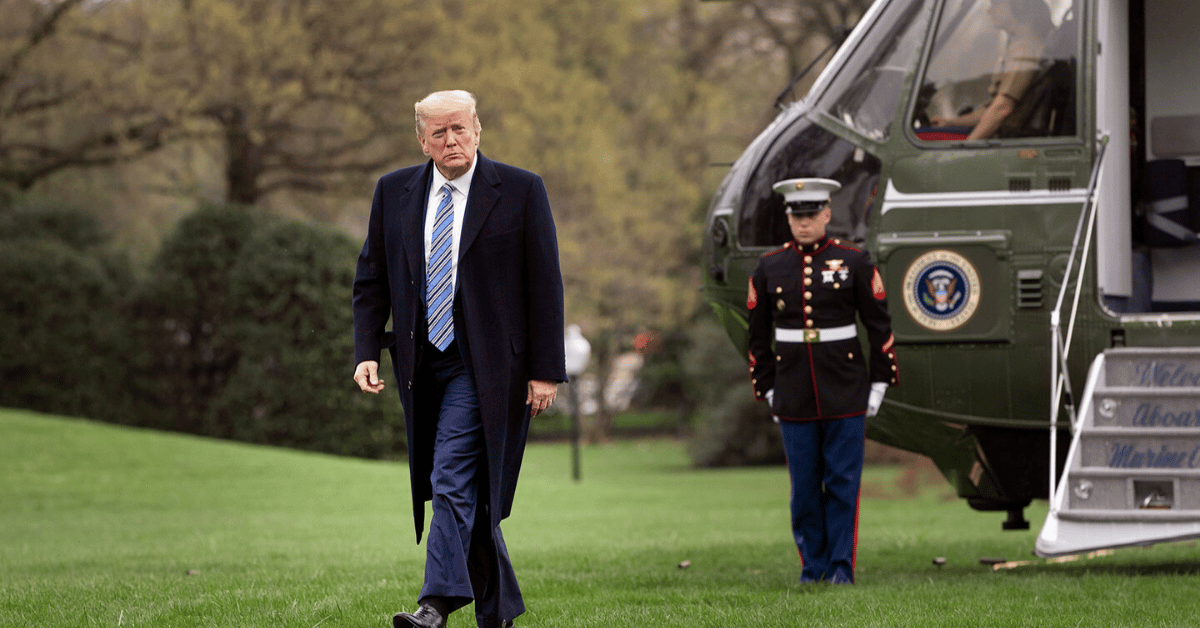

President Donald Trump’s War Department, the bold new moniker for the Defense Department, is charging full steam ahead with a jaw-dropping plan to supercharge U.S. weapons production.
The Washington Examiner reported that the Trump administration is laser-focused on doubling missile capacity to counter looming threats from China, while grappling with depleted arms stockpiles after supporting allies like Ukraine and Israel in recent conflicts.
This push, announced by the War Department on a recent Monday, isn’t just a routine upgrade—it’s a full-throttle response to global tensions.
With strategic concerns about China dominating U.S. foreign policy, the stakes couldn’t be higher. And let’s be honest, in a world where Beijing is cozying up to Moscow, a strong defense isn’t a luxury; it’s a necessity.
Major efforts are underway to expand defense capabilities, just as Trump prepares to address a rare assembly of top military brass. The Pentagon is accelerating production to match escalating global threats, particularly the specter of conflict with an increasingly assertive China.
War Secretary Pete Hegseth is leading the charge, pressing industry giants like Lockheed Martin and Raytheon to ramp up output on a dozen key weapons systems. If China’s military rehearsals are any indication, as Hegseth warns, they’re not playing games—and neither should we.
Adding fuel to the fire, U.S. arms supplies have taken a hit after sending critical munitions, including Patriot missiles, to Ukraine in its fight against Russia.
Hundreds of American-made missiles also supported Israel during its brief clash with Iran earlier in June. This depletion has left some military leaders uneasy about America’s readiness for future challenges.
Speaking of readiness, Hegseth isn’t mincing words about the dragon in the room. “The China threat could be imminent,” he declared, a stark reminder that Beijing’s ambitions aren’t just talk. While progressive voices might downplay this, ignoring a rival building ties with Russia and flexing over Taiwan is a gamble we can’t afford.
China’s aggressive posturing over Taiwan, a vital U.S. ally in the Pacific, has military commanders sounding the alarm. If Beijing moves to seize control, the economic fallout would be catastrophic, with ripple effects slashing GDP across Asia and hitting the U.S. hard.
Yet, in a twist, Trump reportedly paused hundreds of millions in military aid to Taiwan earlier this month, eyeing a trade deal with Beijing to dial down tensions. It’s a high-stakes chess move—balancing diplomacy with defense—but one that’s raised eyebrows among hawks who fear softening our stance.
On the cybersecurity front, the Pentagon under Hegseth is slamming the door on China-based engineers accessing the department’s cloud systems, citing serious risks.
When a rival’s cyber capabilities are labeled “aggressive and dangerous,” as Hegseth did in May, it’s not just tech jargon—it’s a national security red flag.
Meanwhile, China has scoffed at Trump’s pitch for trilateral denuclearization talks alongside Russia, showing little interest in playing nice. This snub, while frustrating, underscores why bolstering our arsenal isn’t optional; it’s survival in a multipolar world.
The administration is also working to de-escalate regional conflicts, like the Russia-Ukraine war and Israel’s battle with Hamas in Gaza, fearing a broader clash or even a World War III scenario. It’s a tightrope walk—supporting allies while conserving resources for the bigger fight that might be looming.
Amid all this, the War Department’s collaboration with defense contractors signals a unified front. As Pentagon spokesman Sean Parnell put it, “This effort has been a collaboration between defense industry leaders and senior Pentagon officials.” That’s encouraging, though one wonders if bureaucracy will slow the pace when time is of the essence.
Growing concerns over a thinned-out weapons stockpile have made this “extraordinary” push, as the War Department calls it, a top priority. Critics on the left might grumble about military spending, but when foes are circling, a strong deterrent isn’t hawkish—it’s common sense.



